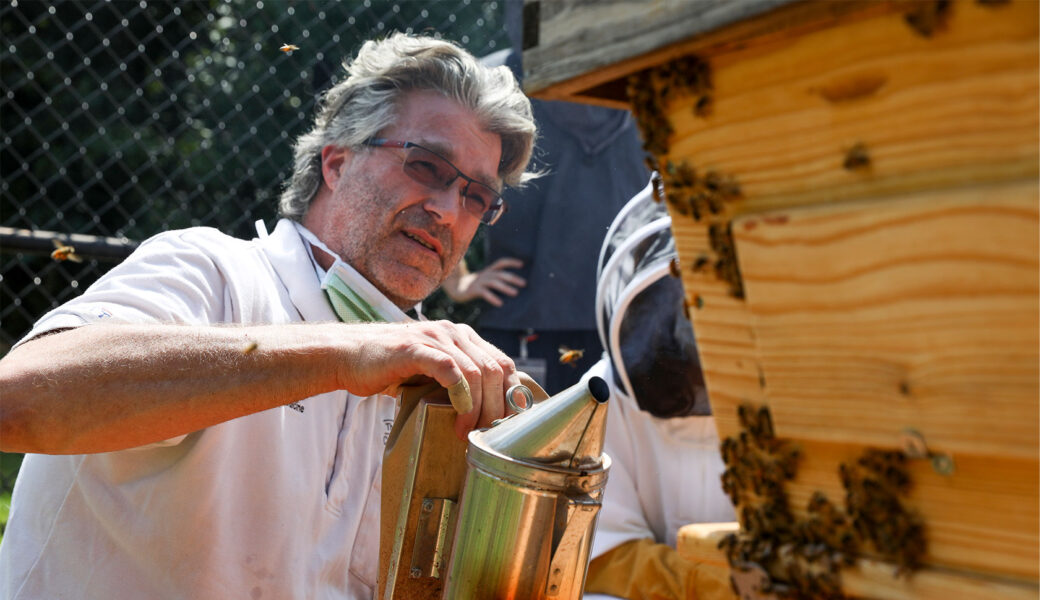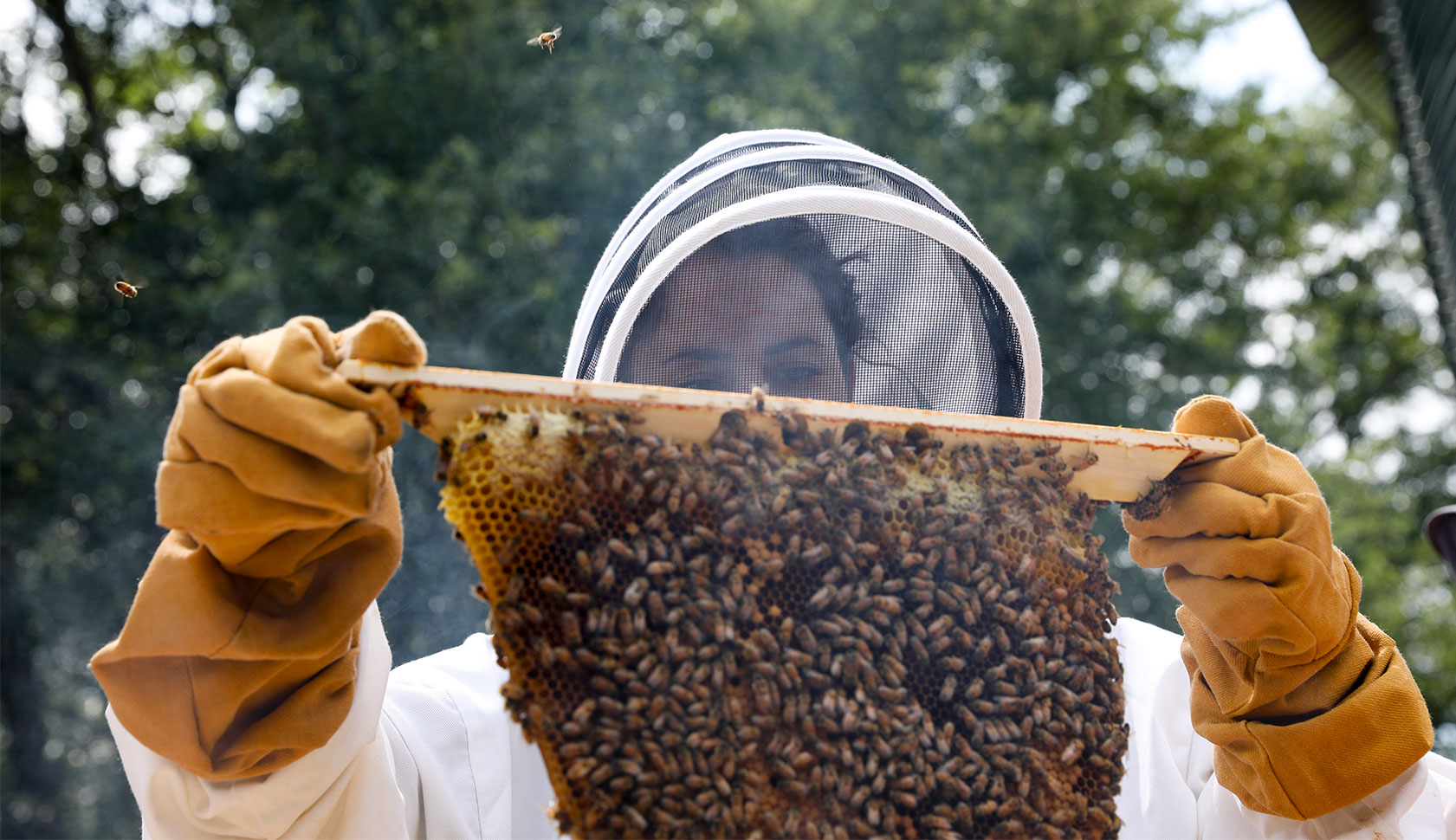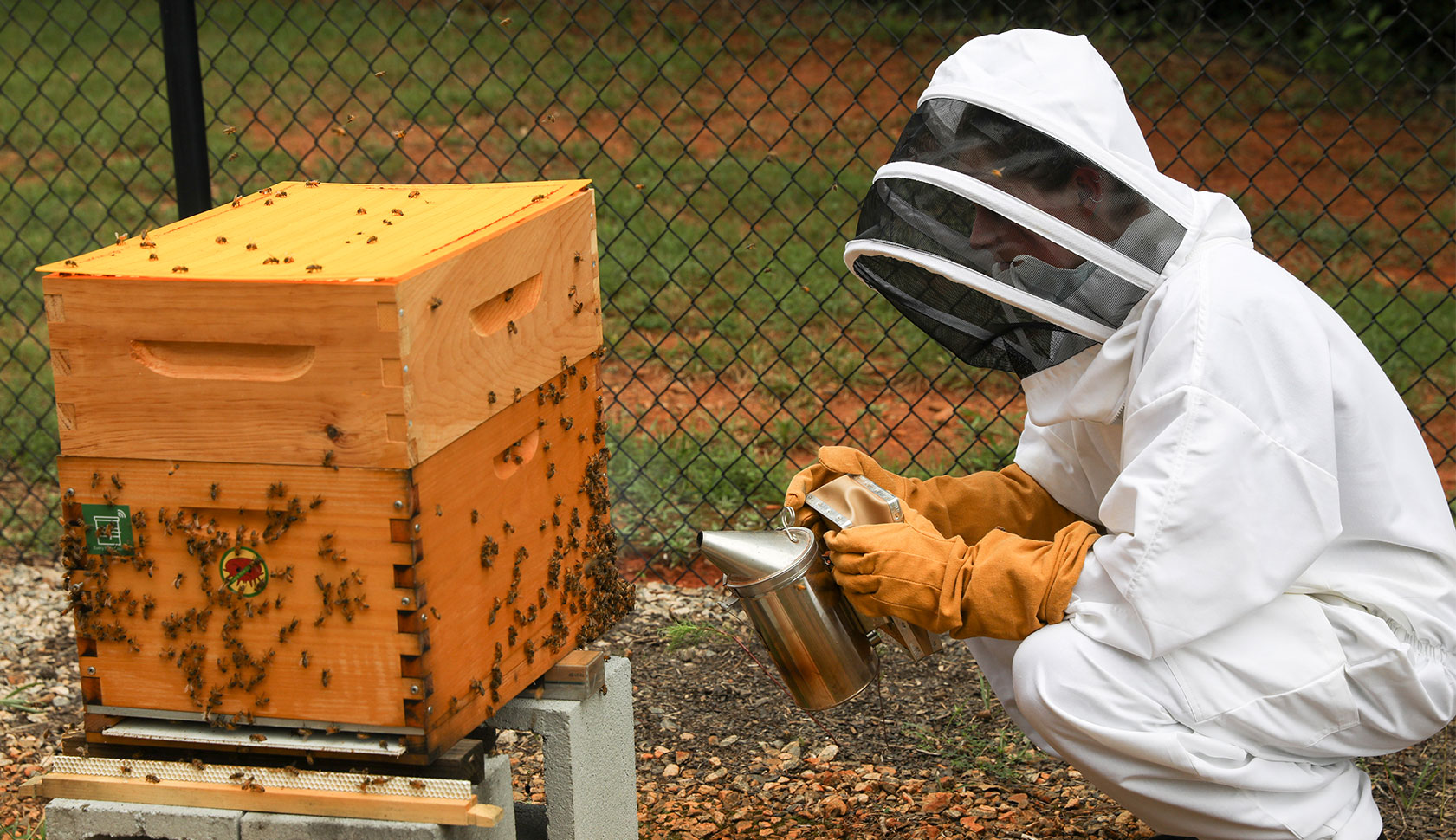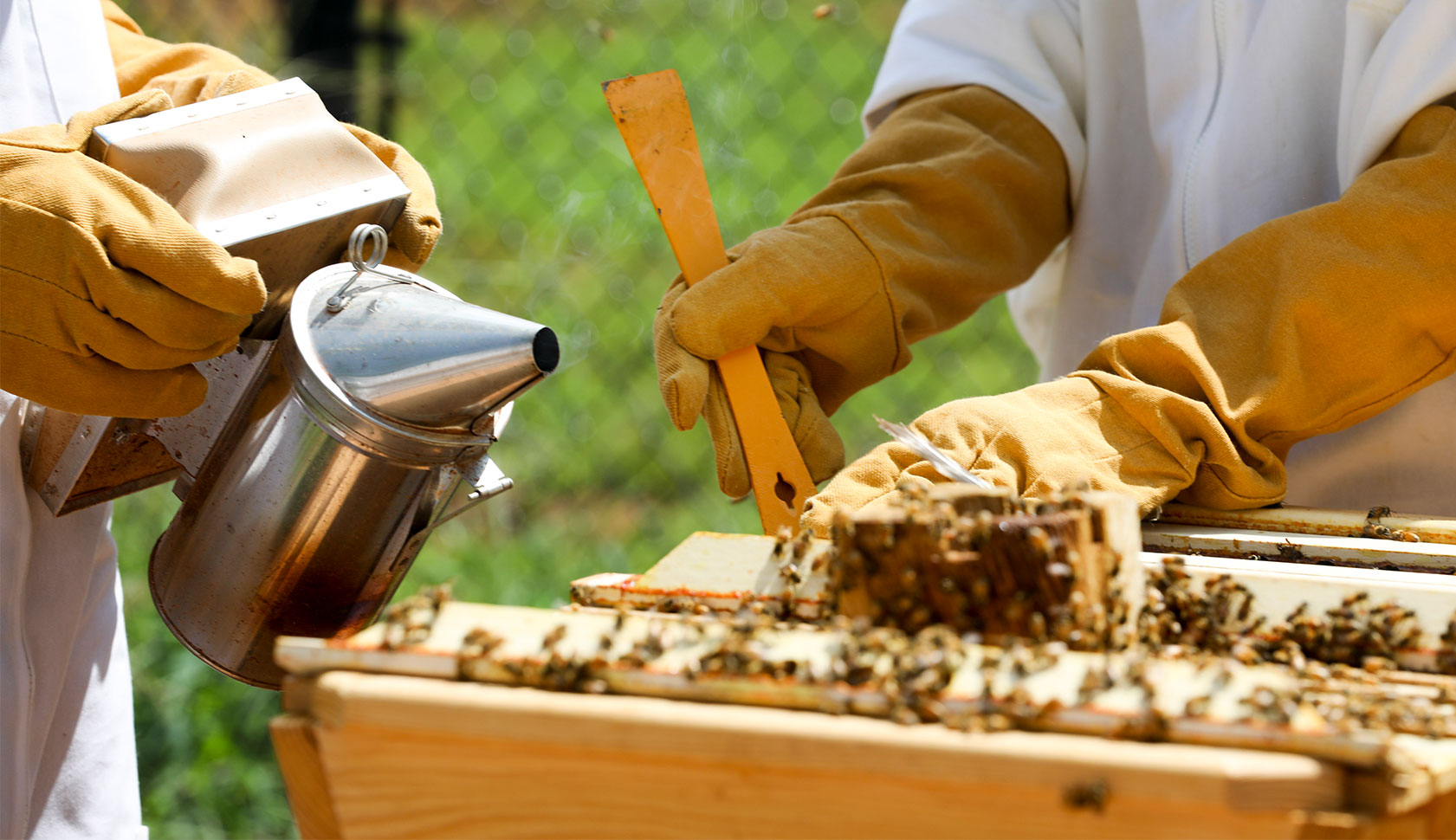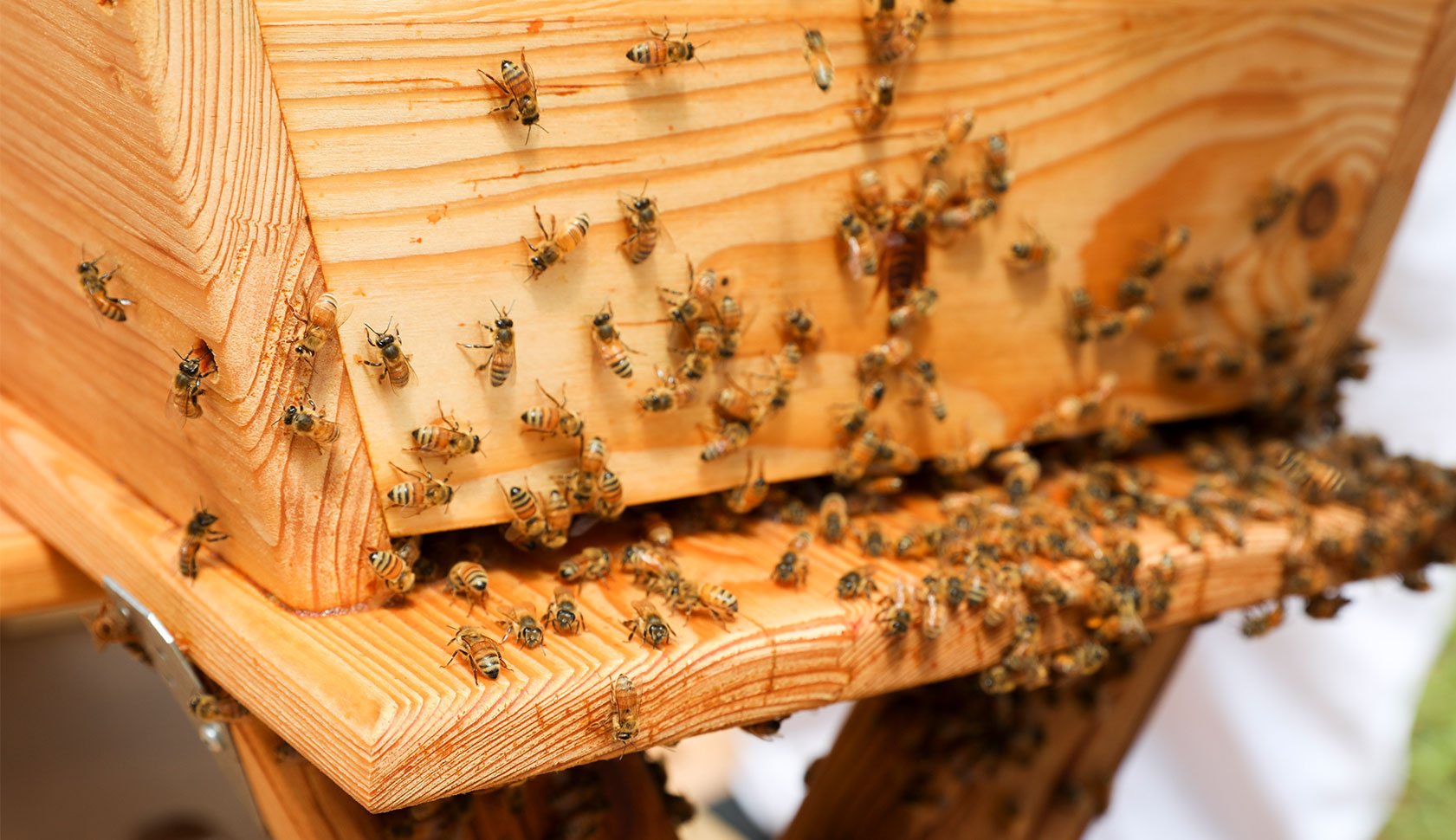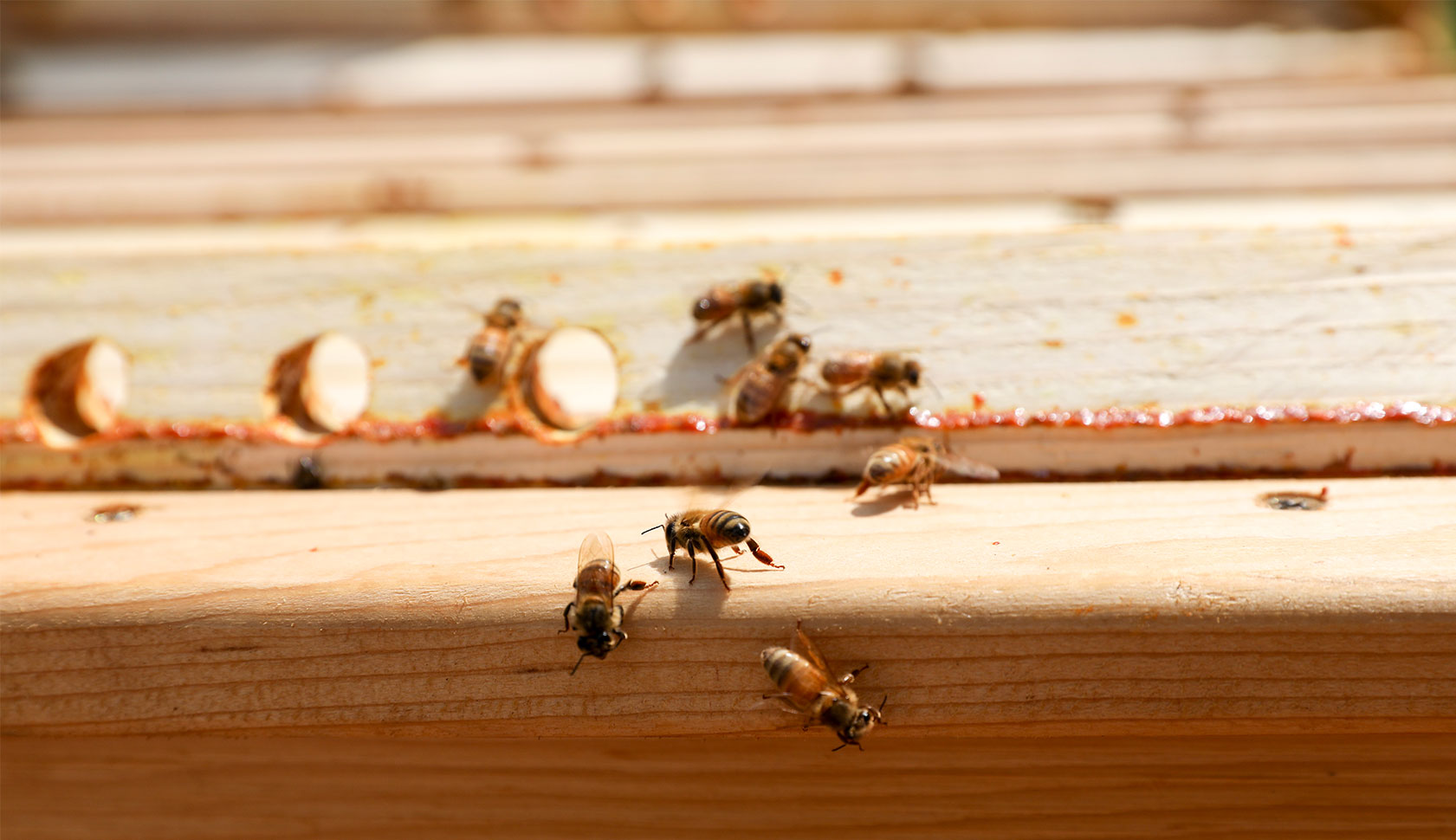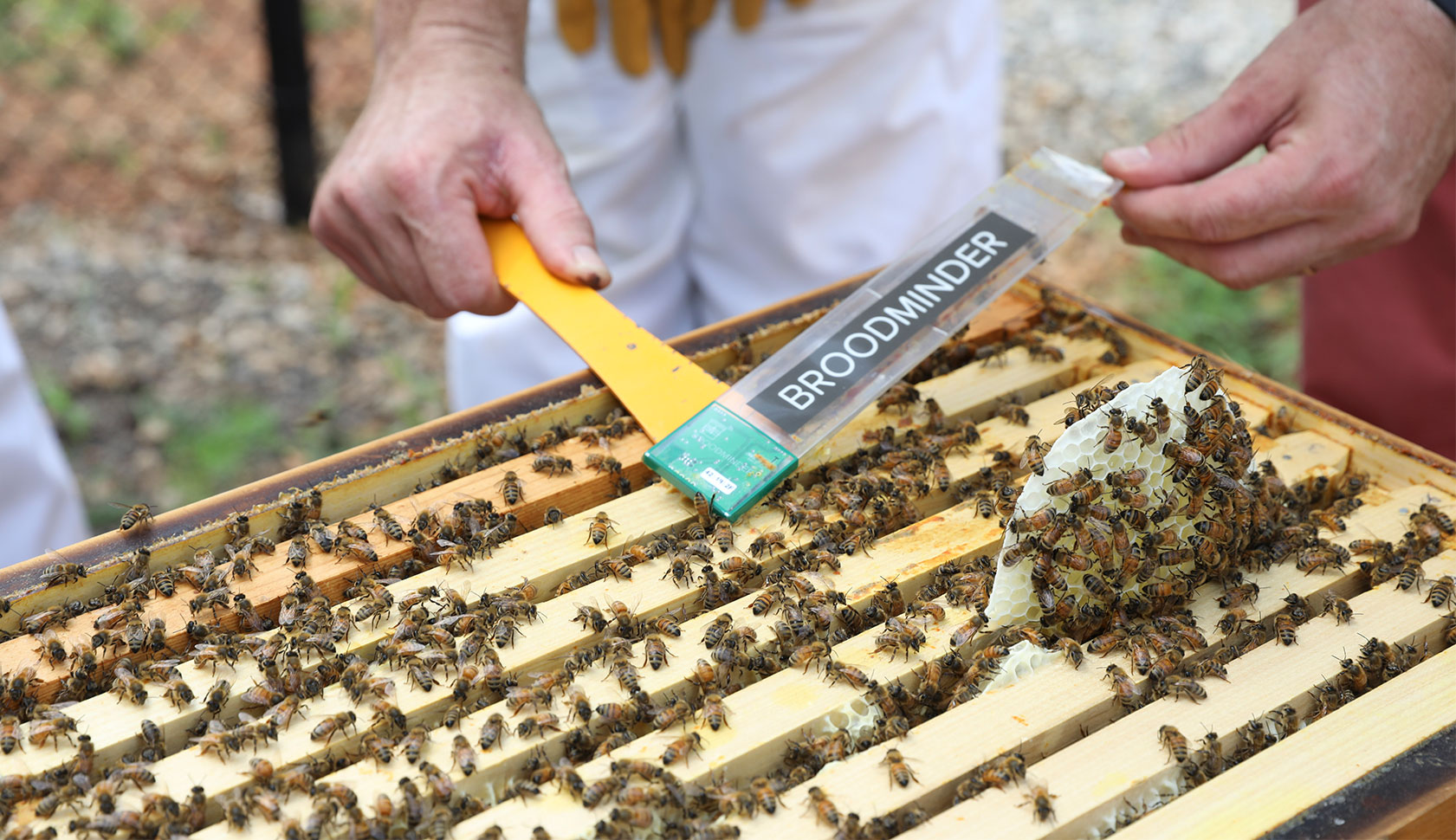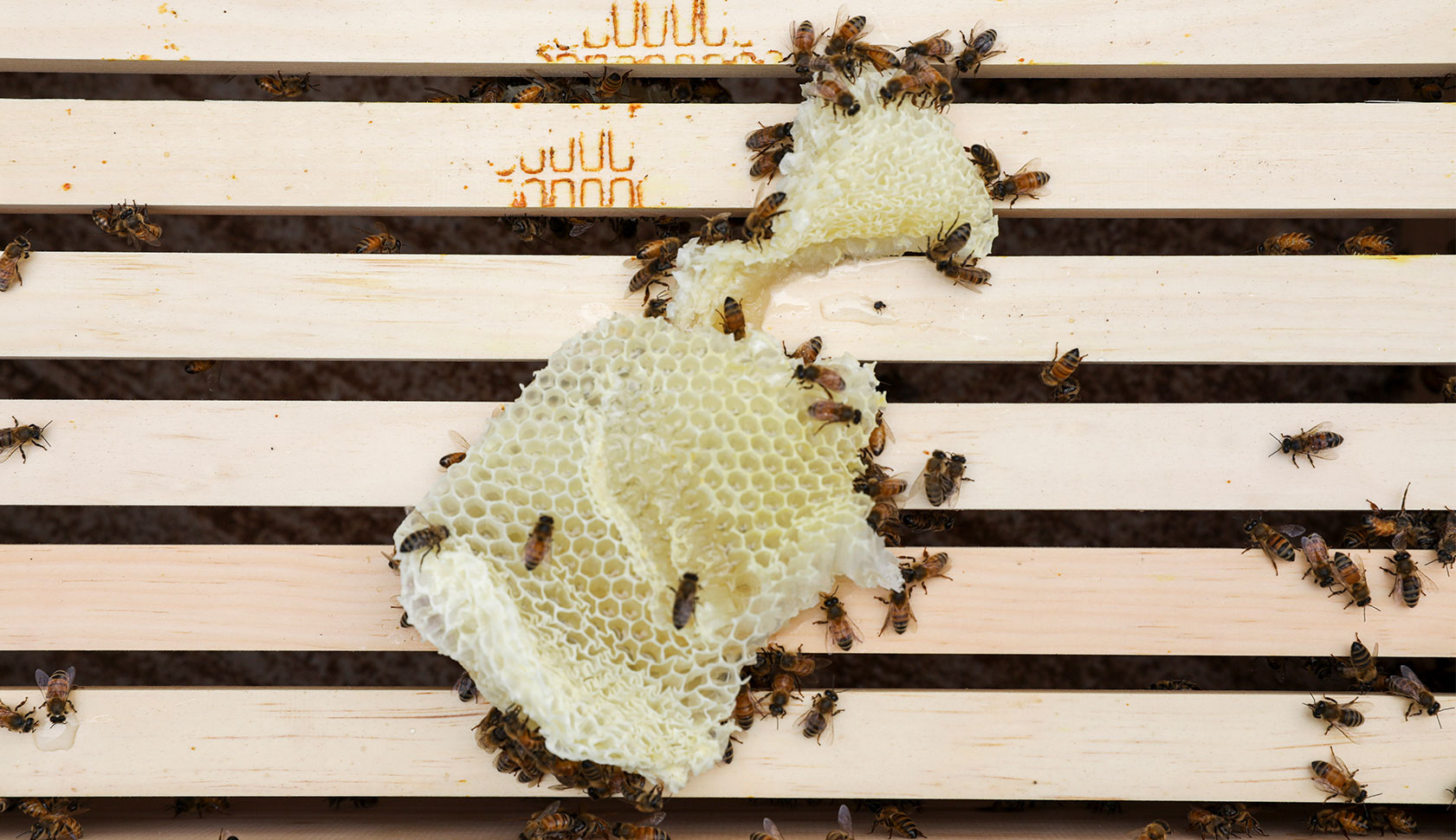When you think of livestock, you might think of pigs, cows or chickens. But many people often forget the tiniest: honeybees.
For centuries, humans have harvested honey, honeycombs and other products from bees. As beekeeping has grown in popularity over the last decade, people and agencies like the Food and Drug Administration (FDA) have realized the need for more veterinary care for their pint-sized resources.
That’s where University of Georgia Professor Joerg Mayer comes in. A little over five years ago, the FDA released guidelines and regulations on veterinary care. Seeing a lack of information on bees and having a background in beekeeping, Mayer began a beekeeping veterinary program that allows students to work hands-on with the animal.
“Usually, students in the veterinary program don’t get the chance to work with actual animals until around their fourth year, but through this program, they are learning how to treat and care for small livestock,” said Mayer, a professor in the College of Veterinary Medicine.
In the United State, more than one-third of all crop production requires insect pollination, according to the U.S. Department of Agriculture. Managed honeybee colonies are a primary pollinator, adding at least $15 billion each year by increasing yields and ensuring quality harvests.
Mayer and his students manage a set of hives outside the veterinary hospital on College Station Road in Athens. The hives are tucked away in a secure, fenced-off area near the facility’s retention pond.
Scroll through the photos above to learn more about beekeeping and some of the common behaviors exhibited by bees.



